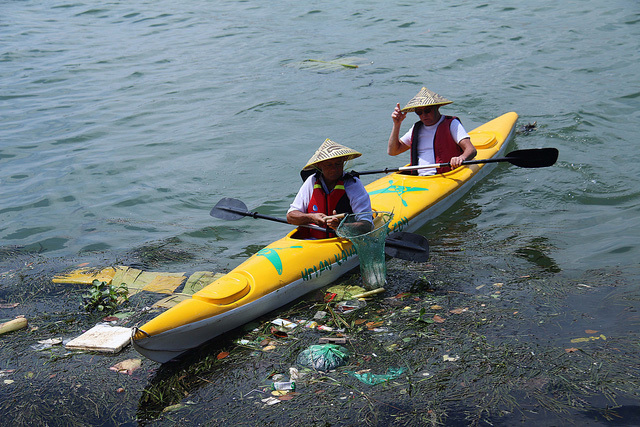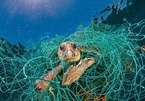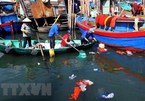Huong River is an important part of Thua Thien-Hue. The river is not only an important destination for travelers, but also serves as the water supply source to local people.

However, the river is suffering from serious plastic waste pollution.
A survey conducted by the researchers from the Hue University found that on a 5 kilometer river section from Da Vien Bridge to Cho Dinh Bridge, 543.8 tons of plastic waste were found on the river bed.
“The amount of plastic waste existing on the river bed ascends with the flow and will be bigger if calculating for the entire river,” said Tran Ngoc Tuan, head of the research team.
| In Vietnam, management agencies are busy studying pollution caused by ocean plastic waste, but another type of pollution, river plastic waste, has occurred. |
The same situation is occurring at Ba Lat, the biggest estuary in the north from which the Red River goes to the sea. Scientists pointed out that since the location is near the Xuan Thuy National Park, the plastic waste pollution may affect the mangrove ecosystem there.
Chelsea Rochman from Toronto University in 2018 joined forces with the Vietnam’s Ministry of Natural Resources and the Environment to carry out study to assess the status of the plastic waste pollution at Ba Lat. They found that places along the Red River had the highest density of waste.
“Evidence shows that this amount of waste can have significant impacts on the health of the ecosystems and local people,” he said.
The discoveries show that accelerating research on plastic waste pollution on rivers is a necessity, especially for Vietnam, the country with the high-density river network and 100 estuaries.
What are the problems that hinder research on river plastic waste?
According to Ha Thi Hien from the Water Resources University, one of the biggest problems is the lack of money to buy equipment for research.
“It is more costly to carry out research on plastic waste on rivers than on land,” she explained.
Hien and her team are carrying out a research project on plastic waste at Ba Lat Estuary funded by NAFOSTED.
“After collecting samples from the bottom of the river, we have to filter samples to analyze the micro-plastic components, and the work alone takes several months long,” she said.
In such conditions, Le Thi Van Hue from the Institute for Natural Resources and the Environment thinks it would be better to cooperate with the world’s large institutes which have resources and experience.
Hue said both Vietnamese and international research institutes want to study plastic waste in rivers.
Thien Nhien

Vietnam to start plastic waste reduction action plan
Vietnamese authorities have started many plans and programmes in order to reduce ocean plastic waste.

Vietnam's action plan hopes to reduce 75 percent of marine plastic waste
Prime Minister Nguyen Xuan Phuc has issued a national action plan on marine plastic waste management by 2030 that aims to reduce 75 percent of plastic debris in the ocean in the next 10 years.
 In Vietnam, management agencies are busy studying pollution caused by ocean plastic waste, but another type of pollution, river plastic waste, has occurred.
In Vietnam, management agencies are busy studying pollution caused by ocean plastic waste, but another type of pollution, river plastic waste, has occurred.